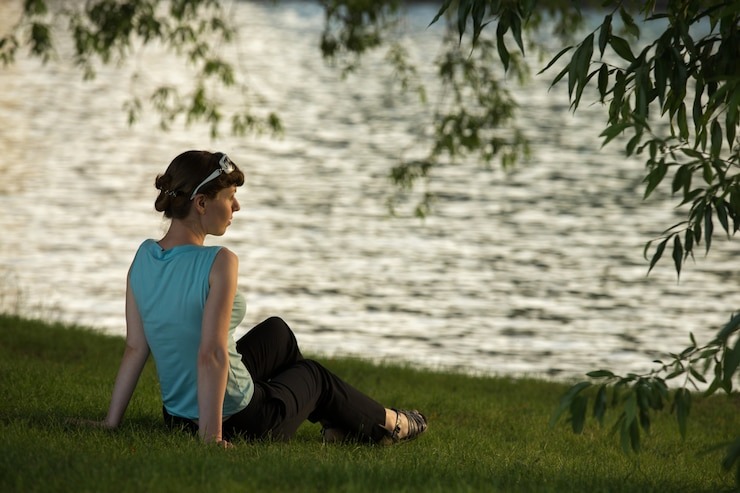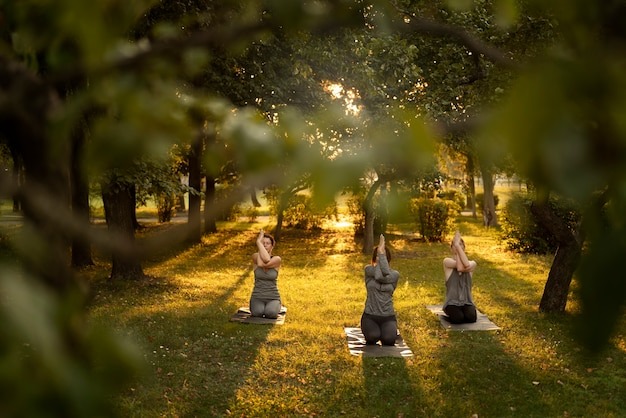Nature therapy for stress relief is quickly becoming one of the most effective and accessible ways to combat modern-day mental strain, anxiety, and emotional fatigue.
Whether you’re a hunter moving silently through woodlands, a hiker pacing along winding trails, or someone who pauses to observe the movement of treetops, nature has a subtle yet profound impact.
From the very first breath of mountain air to the quieting of your thoughts under a forest canopy, nature therapy for stress relief invites the mind and body into a state of balance and resilience.
What Is Nature Therapy? (Definition and Origins)
Nature therapy, or ecotherapy, is a practice that deliberately connects individuals with the natural world for health and wellness benefits. R
ooted in both ancient traditions and modern psychology, nature therapy for stress relief uses green environments to support emotional balance, promote clarity, and reduce symptoms of anxiety and depression.
Practices like forest bathing—or Shinrin-yoku—originate from Japanese wellness ideologies, designed to slow the body and create presence through mindful interaction with forests.
Indigenous cultures across the globe have long used the land not just for survival, but for spiritual and mental renewal. Unlike simple outdoor recreation, nature therapy often includes a therapeutic intent—focusing less on performance or goals and more on being, sensing, and reflecting.
While wilderness therapy may include multiple-day expeditions and professional psychological guidance, nature therapy can be self-guided and often aligns with holistic healing approaches like mindfulness, meditation, and biofeedback.

Science-Backed Benefits of Nature Exposure for Stress Relief
The evidence supporting nature therapy for stress relief is now robust. Exposure to green space is directly tied to reduced cortisol levels, lower heart rates, and decreased activity in the brain’s fear and stress centers, especially the amygdala.
Studies from institutions like Stanford University and the University of Exeter have demonstrated that regular time spent in natural settings positively impacts mood, enhances cognitive function, and fosters resilience against depression and anxiety.
Sunlight exposure contributes to vitamin D production and better regulation of circadian rhythms, both essential for emotional health.
Natural environments also promote alpha brain waves associated with calmness and meditative states, while increasing serotonin, the neurotransmitter linked with feelings of happiness.
Even brief walks in nature have been shown to reduce rumination, a key symptom of anxiety and depression. Nature therapy for stress relief thus offers both instant and cumulative benefits over time.
Popular Types of Nature Therapy Practices
Forest Bathing (Shinrin-yoku)
Forest bathing isn’t about hiking or exercising—it’s about soaking in the forest atmosphere through all your senses. To practice it:
- Visit a forest or wooded area.
- Turn off your devices.
- Walk slowly and silently.
- Focus on sights, scents, textures, and sounds.
This simple presence practice forms nature therapy’s cornerstone for stress relief.
Nature Therapy For Stress Relief and Bushcraft Immersion
By pairing survival skills like making fires, foraging, or shelter building with guided introspection, wilderness therapy offers profound transformation, especially for those dealing with PTSD, addiction, or significant life transitions.
Outdoor Meditation and Grounding
Whether it’s walking meditation on a forest trail or barefoot grounding in a grassy field, combining mindfulness with nature deepens the benefits of both. Outdoor breathing exercises and body scans under trees unify internal awareness with environmental serenity.
Adventure Therapy
Activities like rock climbing, mountain hiking, and even hunting can be tailored into therapeutic experiences. Nature therapy for stress relief becomes particularly resonant when bravery in nature parallels emotional challenges in daily life.
Gardening and Horticultural Therapy
Engaging with soil improves mood and has even been linked to microbial effects on serotonin production. Tending to plants, observing natural cycles, and developing patience make gardening a restorative and meditative therapy.
How Outdoor Activities Support Mental Health & Stress Management

Hunting and Solitude
Hunting cultivates silence, focus, and connection. Nature therapy for stress relief finds fertile ground in the solitary stillness of the woods, where awareness sharpens and thoughts settle. The rhythmic patterns of stalking or waiting are meditative and purposeful.
Hiking and Backpacking
The rhythmic motion of hiking enhances serotonin release, while visual flow offers sensory balance. Trails that wind through diverse terrain stimulate curiosity and reward perseverance—two psychological traits that counteract stress.
Fishing and Patience
Waiting for a bite requires stillness, observation, and calm—elements of mindfulness. Many anglers describe fishing as a moving meditation, ideal for nervous system regulation.
Camping and Unplugging
Time away from screens works wonders. A weekend immersed in nature restarts mental clarity, improves sleep cycles through natural light exposure, and resets your attention span. Camping offers one of the purest forms of nature therapy for stress relief.
Birdwatching and Observation
Birdwatching encourages concentration and elevates mood through beauty and curiosity. Focusing on birdsong and behavior draws attention away from stressors and into the present.
Who Benefits Most from Nature Therapy?
- Office workers experiencing screen fatigue and burnout
- Veterans and first responders coping with trauma
- Youth with ADHD or mood imbalances
- Individuals with anxiety, depression, or PTSD
- Urban dwellers with limited nature exposure
- Outdoor enthusiasts seeking deeper meaning in their adventures
Nature therapy for stress relief adapts to all walks of life, requiring no expensive equipment or extended getaways.

How to Start Your Nature Therapy Journey
- Begin with 20–30 minutes of outdoor “green time” three times a week.
- Choose spaces that align with your emotional needs: open meadows may energize, dense forests may calm, and rivers might inspire flow.
- Leave phones behind or use “Do Not Disturb.”
- Use apps like AllTrails or NatureDose to track time outdoors and log effects.
- Create weekly rituals like Saturday forest walks or sunrise breathing by a lake.
Most importantly, set the intention to be fully present while in nature.
Nature Therapy Tips for Hunters & Outdoor Enthusiasts
- Practice mindful steps while stalking game: what do you hear, smell, and sense?
- Use post-hunt journaling to reflect on the pursuit and your emotional and psychological state.
- Turn the silence of early morning hunts into a listening practice.
- Observe animal behavior to understand seasonal rhythms and your place in them.
- Allow the hunt to be both quest and catharsis.
Nature therapy for stress relief reaches a unique depth for those living close to the land through sport and survival.
Urban Nature Therapy: Stress Relief Without Leaving the City
Not everyone can escape to the mountains, but nature is closer than you think.
- Explore your city’s micro-greenspaces—parks, rooftop gardens, tree-lined streets.
- Add houseplants, water features, and natural textures into your home or office.
- Try virtual forest walks or calming soundscapes through Calm or Insight Timer platforms.
- Volunteer for local ecological projects or join a community garden.
- Practice balcony grounding or bird watching from your window.
Even in urban sprawl, nature therapy for stress relief is entirely within reach.
Potential Risks or Limitations of Nature Therapy
- Nature can be unpredictable: prepare for weather, terrain, and wildlife.
- People with mobility challenges or disabilities may face access barriers.
- Nature therapy is not a substitute for clinical mental health care if professional diagnosis or intervention is needed.
- Escapism can be a pitfall—ensure the goal is healing rather than avoidance.
- Always trust your instincts and seek support if required.
Conclusion
Nature therapy for stress relief is more than an idea—it’s a return to something inherently human. In every forest trail, winding river, or starlit campsite lies the chance to reconnect, recharge, and remember who we are without the noise. Whether you find therapy in the stillness of the woods, the patience of the hunt, or the rhythm of your footsteps across soil, the natural world is calling you back.
Nature isn’t distant. It’s waiting outside your door with open skies, calm waters, and steady trees. You don’t need to escape life—you just need to return to it in its purest form. Begin your nature therapy journey today. Let the woods be your sanctuary and the trail be your guide.
About Tom Guzman
My name is Tom Guzman, and the backcountry has been both my workplace and classroom for years. I’ve spent countless seasons refining ethical hunting techniques, testing gear in unforgiving environments, and mastering the survival skills that turn a risky outing into a rewarding adventure.
As the founder of Trophy Pursuit, I weave that firsthand knowledge together with a solid background in digital marketing and SEO to produce clear, reliable content for fellow hunters. My goal is simple: give beginners and seasoned outdoorsmen alike the practical guidance they need—on gear, strategy, and safety—to achieve greater success every time they step into the wild.

